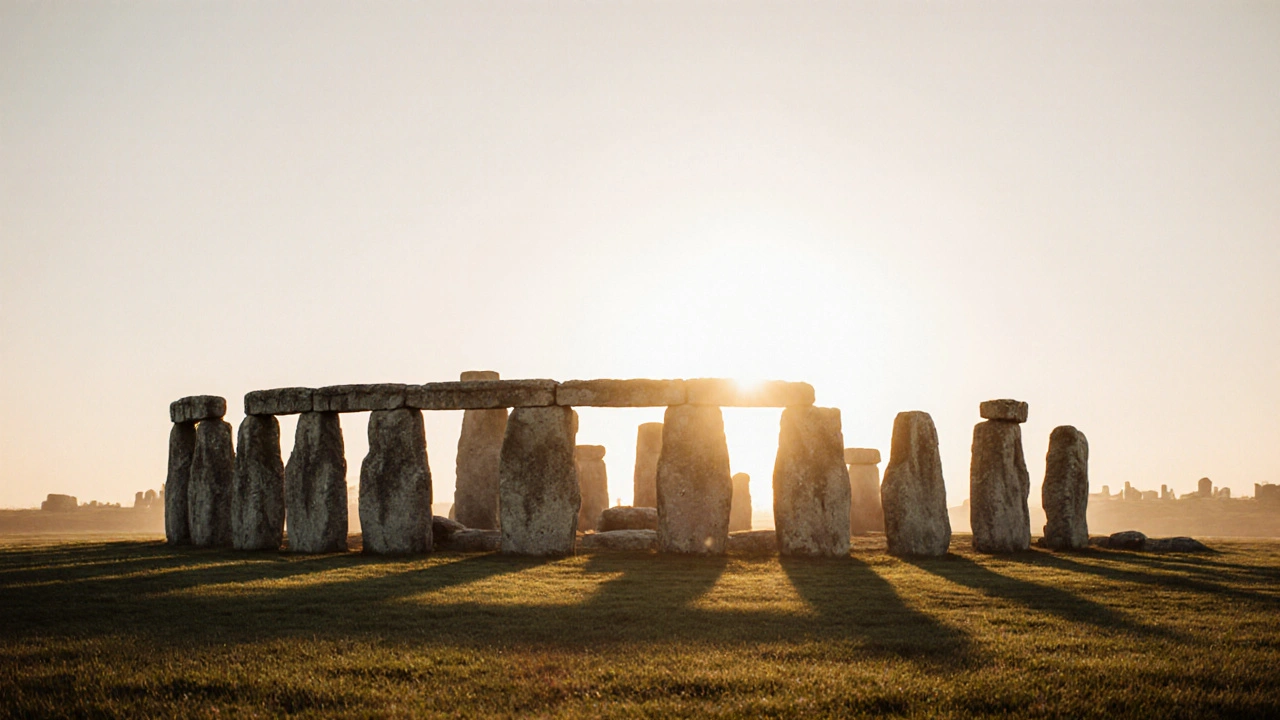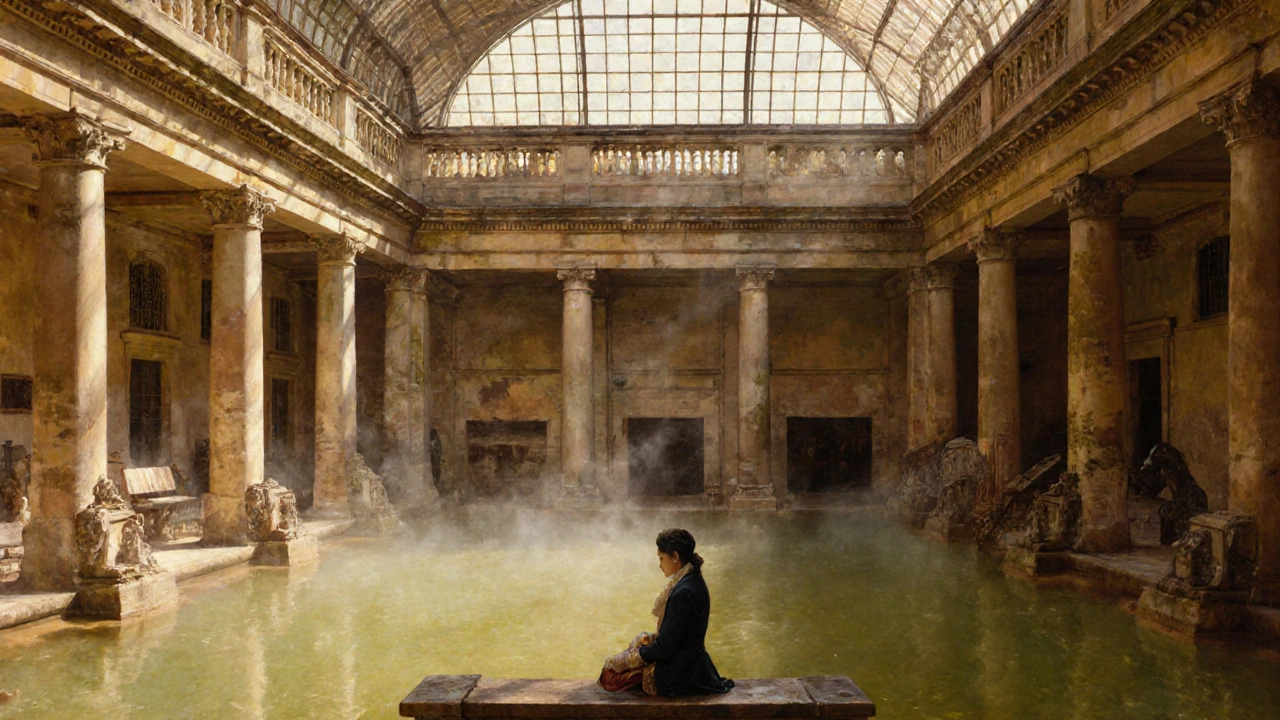
Two hours from Manchester, you can stand in the shadow of 5,000-year-old stones that have watched over England since before the pyramids were built. Just 20 minutes farther, you’ll find a city built on hot springs that Romans loved, Georgian elegance, and cobbled streets that still echo with history. This isn’t a fantasy. It’s a real weekend trip - Stonehenge and Bath - and it’s easier to do than you think.
Why Stonehenge and Bath Together?
Most people visit Stonehenge as a standalone wonder. They snap a photo, walk around the circle, and leave. But that’s like visiting the Louvre and only seeing the Mona Lisa. Stonehenge is powerful, yes - but it’s not the whole story. Bath tells the rest.
Stonehenge is mystery. Bath is human history. One is ancient ritual. The other is daily life, preserved in stone and steam. Together, they show how Britain’s past wasn’t just about gods and ghosts - it was about people who bathed, traded, danced, and died in the same places we now walk.
There’s no better way to feel the weight of time than standing at Stonehenge at sunrise, then sipping tea in a 1700s pump room where nobles once soaked in mineral water. You’re not just seeing two sites. You’re tracing a thread from prehistory to the Enlightenment.
Getting There: No Car? No Problem
You don’t need a car. Trains from Manchester Piccadilly to Bath Spa take about 3 hours with one change, usually in Bristol or Swindon. Book ahead - fares drop if you reserve 12 weeks out. From Bath, take the 17 or 18 bus to Stonehenge. It runs hourly from April to October, and every two hours in winter. The ride is 30 minutes. The bus stop is right at the visitor center.
If you’re driving, take the M6 south to the M4, then follow signs for Amesbury. Parking at Stonehenge costs £10 for non-members. At Bath, street parking is tight. Use the Royal Crescent car park - it’s a 10-minute walk to the city center and costs £2.50 per hour.
Pro tip: Leave Manchester by 7 a.m. on Saturday. You’ll hit Bath by noon, have time to explore, and catch the 3:30 p.m. bus to Stonehenge. You’ll be back in Bath by 6 p.m., just in time for dinner.
Stonehenge: What You Actually Need to Know
Stonehenge isn’t just rocks. It’s a precision instrument. The stones align with the summer solstice sunrise and winter solstice sunset. Archaeologists found that the bluestones - the smaller ones - were carried 140 miles from Wales. How? No wheels. No horses. Just ropes, sledges, and thousands of hours of human effort.
The new visitor center, opened in 2013, is a game-changer. You get an immersive audio tour that explains the theories - from ancient priests to alien builders - without pushing any one answer. The walk to the stones is now on a footpath, not a dusty road. You can get within 10 feet of the stones during special access tours (book these weeks ahead).
Don’t skip the exhibition. It shows real tools used to shape the stones. One axe head, carved from deer antler, is over 4,000 years old. You’ll see how the stones were polished with sand and water. The scale of this effort hits harder when you know it took 1,500 years to build.
Most visitors miss the nearby burial mounds. Walk 15 minutes east along the path. You’ll find the Cursus - a 1.7-mile-long earthwork older than Stonehenge. No signs. No crowds. Just silence and grass. That’s where the real magic lives.

Bath: More Than Just a Spa Town
Bath isn’t just about the Roman Baths. That’s the postcard. The real Bath is in the alleyways, the tea rooms, and the quiet corners where the city breathes.
The Roman Baths are stunning - the only place in the world where you can see a temple built over natural hot springs, still bubbling. But don’t just walk through. Sit on the bench by the Great Bath and listen. The water hisses. The stone glows green with algae. It’s alive. The Romans didn’t just bathe here - they prayed here. The altar to Sulis Minerva still stands. They believed the goddess healed through the water.
Upstairs, the Pump Room is where the 18th-century elite came to sip the water and gossip. Today, you can still order a cup of the mineral-rich water. It tastes like iron and earth. Most people gag. But try it. It’s part of the story.
Walk up to the Royal Crescent. It’s not just a row of houses - it’s a single architectural statement. 30 identical terraced homes, built in 1767, curved like a smile. The front doors are all different - each family chose their own color, their own door knocker. Look closely. One has a lion’s head. Another, a hand. These weren’t just rich people. They were artists, thinkers, and rebels.
Visit the Jane Austen Centre. She lived here in 1801. Her novels are full of Bath’s social rituals - the assemblies, the walks, the tea parties. The museum doesn’t just show her life - it shows how Bath was the social media of its day. Everyone was watching everyone else.
Where to Eat: From Pub Grub to Fine Dining
In Bath, you don’t need to spend a fortune. The White Hart Pub on Stall Street serves a steak and ale pie with crispy, buttery pastry. It’s £14. It’s the best meal you’ll have all weekend.
For something lighter, try the Bath Bun at the Bath Bun Shop. It’s a sweet, sticky roll with candied peel and sugar crystals. It’s not fancy. But it’s what locals ate in 1750. You can still buy it today.
At night, head to The Fat Duck’s little cousin - The Wild Rabbit. It’s in a 17th-century coaching inn. The menu changes daily. Last month, they had venison with blackberry jus and roasted parsnips. It cost £42. Worth every penny.
And yes - there’s a chocolate shop called The Chocolate Room. It’s touristy. But their salted caramel truffles? They’re made with single-origin cocoa from Ghana. Try one. You’ll understand why people come back.

What to Pack
Weather changes fast here. Even in November, it can be sunny at Stonehenge and pouring in Bath. Pack a waterproof jacket. Good walking shoes - cobblestones are slippery when wet. A small umbrella. And a reusable water bottle. The tap water in Bath is fine. You don’t need to buy plastic.
Bring a notebook. You’ll want to jot down things you didn’t know. Like how the stones at Stonehenge were once painted with white chalk. Or how Bath’s hot springs were used by soldiers during WWII to treat shell shock. These details stick with you.
How to Make It Feel Like More Than a Day Trip
Most people rush. They see Stonehenge, then Bath, then head home. But this trip isn’t about ticking boxes. It’s about slowing down.
Stay overnight. Book a B&B in a Georgian townhouse. Wake up to the smell of fresh bread and hear church bells from St. Peter’s Church. Walk the same streets Jane Austen walked. Sit in the Abbey Yard and read a poem. Let the silence settle.
Visit the Roman Baths early. Go right when they open. The crowds won’t be there. The light through the glass roof will turn the water gold. You’ll feel like you’re the first person to see it that day.
At Stonehenge, come at dusk. The stones cast long shadows. The wind moves through the grass. It’s not a tourist site anymore. It’s a sacred space.
Is It Worth It?
Yes. Not because it’s Instagram-famous. Not because it’s on every guidebook. But because it’s rare.
How many places in the world let you stand where ancient people worshipped the sun - then walk 20 minutes to a city where people once soaked in hot water to heal their souls? Where the same ground holds both mystery and meaning?
Stonehenge and Bath aren’t just monuments. They’re mirrors. They show us how humans have always searched for wonder - whether through stone circles or steam baths. And they remind us that history isn’t far away. It’s right under your feet.
Can I visit Stonehenge and Bath in one day?
Yes, but you’ll be rushing. You can do it if you leave Manchester by 7 a.m., spend 2.5 hours at Stonehenge, catch the 3:30 p.m. bus to Bath, and arrive by 5 p.m. You’ll have 2 hours to see the Roman Baths and a quick walk around the city. But you won’t feel it. For the full experience, stay overnight.
Is Stonehenge open in winter?
Yes. Stonehenge is open every day except December 24-26. The visitor center closes at 4 p.m. in winter, and the last bus to Bath leaves at 5 p.m. The site is quieter, and the light is dramatic. Winter solstice is the best time to witness the sunset alignment - but tickets for that event sell out a year in advance.
Are the Roman Baths really hot?
The water in the Great Bath is 114°F (45.5°C) - hot enough to scald. But it’s not safe to bathe in it. The water is now protected for preservation. You can see the heat rising off the surface, and you can smell the minerals. There’s a small pool nearby where you can dip your feet - it’s free and feels amazing after a long walk.
What’s the best time of year to visit?
Late spring (May-June) and early autumn (September) are ideal. The weather is mild, the crowds are thinner than in summer, and the light is golden. Winter has fewer tourists and magical fog over the stones. Avoid July and August - it’s packed, and the buses are full.
Can I bring my dog?
Dogs are allowed on the grounds at Stonehenge if on a lead, but not inside the visitor center or the Roman Baths. In Bath, most pubs and outdoor areas welcome dogs. The Royal Crescent is fine, but avoid the Abbey and indoor museums. Bring water and a towel - the paths can be muddy.